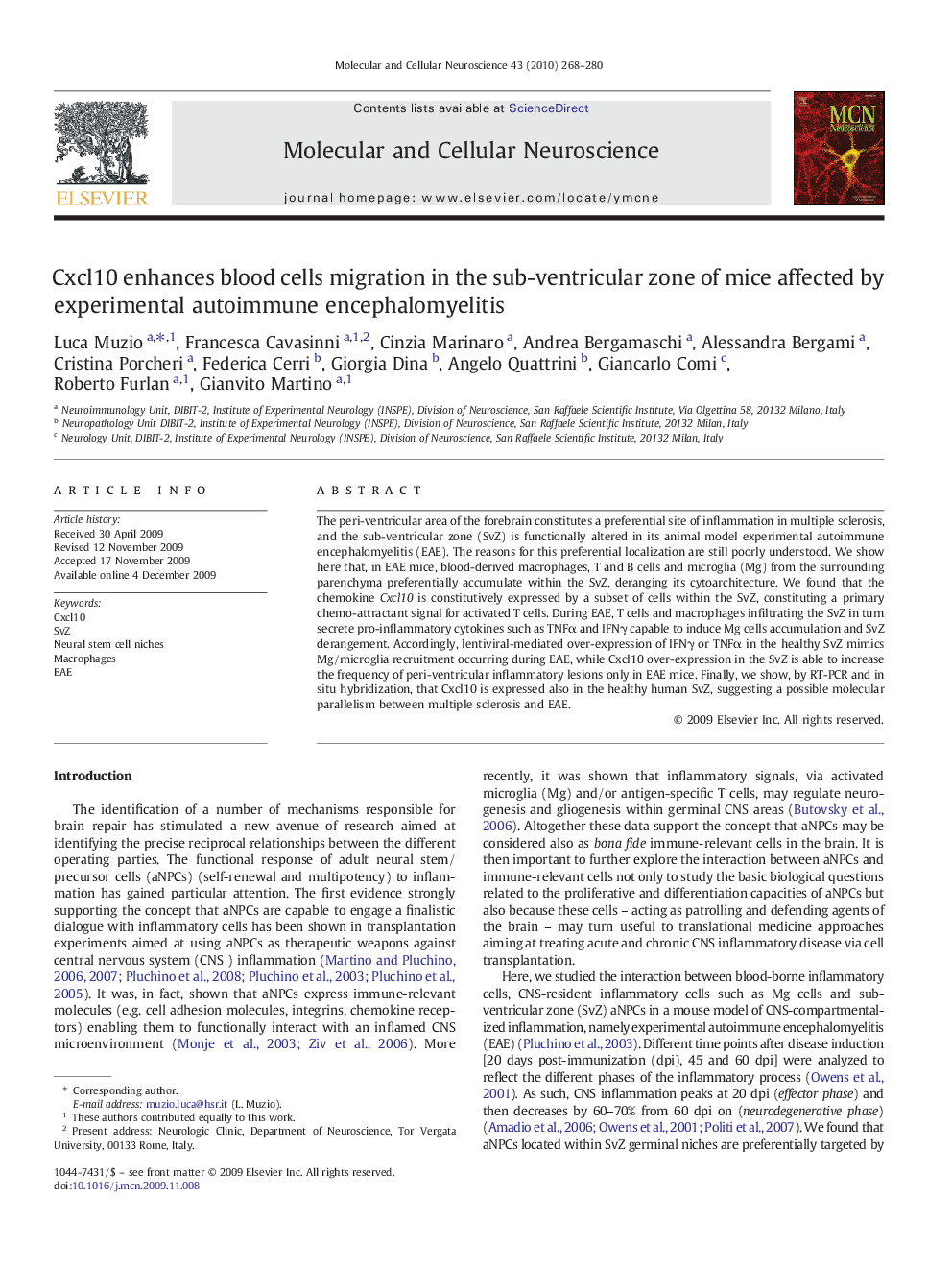| Article ID | Journal | Published Year | Pages | File Type |
|---|---|---|---|---|
| 2198836 | Molecular and Cellular Neuroscience | 2010 | 13 Pages |
The peri-ventricular area of the forebrain constitutes a preferential site of inflammation in multiple sclerosis, and the sub-ventricular zone (SvZ) is functionally altered in its animal model experimental autoimmune encephalomyelitis (EAE). The reasons for this preferential localization are still poorly understood. We show here that, in EAE mice, blood-derived macrophages, T and B cells and microglia (Mg) from the surrounding parenchyma preferentially accumulate within the SvZ, deranging its cytoarchitecture. We found that the chemokine Cxcl10 is constitutively expressed by a subset of cells within the SvZ, constituting a primary chemo-attractant signal for activated T cells. During EAE, T cells and macrophages infiltrating the SvZ in turn secrete pro-inflammatory cytokines such as TNFα and IFNγ capable to induce Mg cells accumulation and SvZ derangement. Accordingly, lentiviral-mediated over-expression of IFNγ or TNFα in the healthy SvZ mimics Mg/microglia recruitment occurring during EAE, while Cxcl10 over-expression in the SvZ is able to increase the frequency of peri-ventricular inflammatory lesions only in EAE mice. Finally, we show, by RT-PCR and in situ hybridization, that Cxcl10 is expressed also in the healthy human SvZ, suggesting a possible molecular parallelism between multiple sclerosis and EAE.
